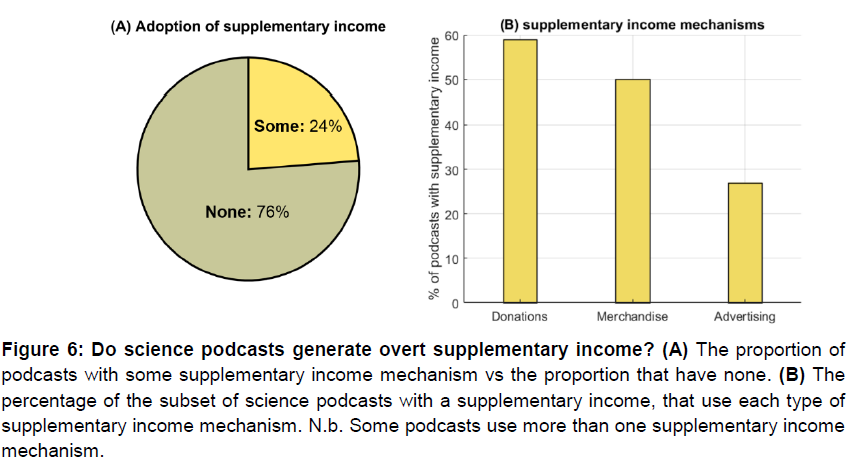I’ve published a preprint surveying the production of over 900 science podcasts in order to understand how podcasts are being used to communicate science to the global public. It is called: 'Science Podcasts: Analysis of Global Production and Output from 2004 to 2018', and it is freely available from BioRxiv at: https://doi.org/10.1101/298356
This study has had a very strong reception online, with over 300 retweets in under 24 hours! This has been a very plesant surprise.
Abstract and key figures are below.
Abstract:
Since the mid-2000s, podcasts have emerged as a new and fundamentally decentralised global medium for science communication, with hundreds of podcasts freely disseminating scientific information worldwide. However, despite widespread interest in the benefits of podcasts for teaching, there have been no studies of how podcasts have been used to communicate science to the global public. Considering the popularity of science podcasts, this represents a large and fundamental gap into how science is being communicated to the public.
This study identified and analysed 952 freely available English language science podcasts. Podcasts were identified by exhaustive survey of the ‘iTunes’ ‘Natural Science’ podcast listings and categorical analysis was performed by textual and graphic data from both ‘iTunes’ and other podcast promotion websites between the 5th January and 5th February 2018. All data generated by this study is freely available as an associated supplementary dataset.
The total number of science podcasts was found to have grown linearly between 2004 and 2010, but between 2010 and 2018 the number of science podcast has grown exponentially. 38% of science podcasts were created by independent producers, but the majority (62%) were produced by various affiliated organisations. Most science podcasts (65%) were hosted by scientists and the majority of science podcasts (77%) were targeted to public audiences. ‘General Science’ was the most common topic for science podcasts, but a diverse range of topics was covered. Notably, chemistry appears to be under-represented compared to physics and biology podcasts. The USA and UK dominate English-language science podcasts, producing 57% and 17% of the science podcasts surveyed. Only 24% of podcasts had overt supplementary income. This suggests many science podcasts were being produced independently by scientists with no financial support. Science podcasts could be separated into ‘short lifespan’ (< 1 year) and ‘long lifespan’ podcasts (> 1 year). Podcasts affiliated with an organisation had a reduced ‘short lifespan’ and a greater ‘long lifespan’ when compared with independently produced podcasts.
This study provides a fundamentally new ‘snapshot’ of how science podcasts are being used to directly communicate science with global public audiences in 2018.







